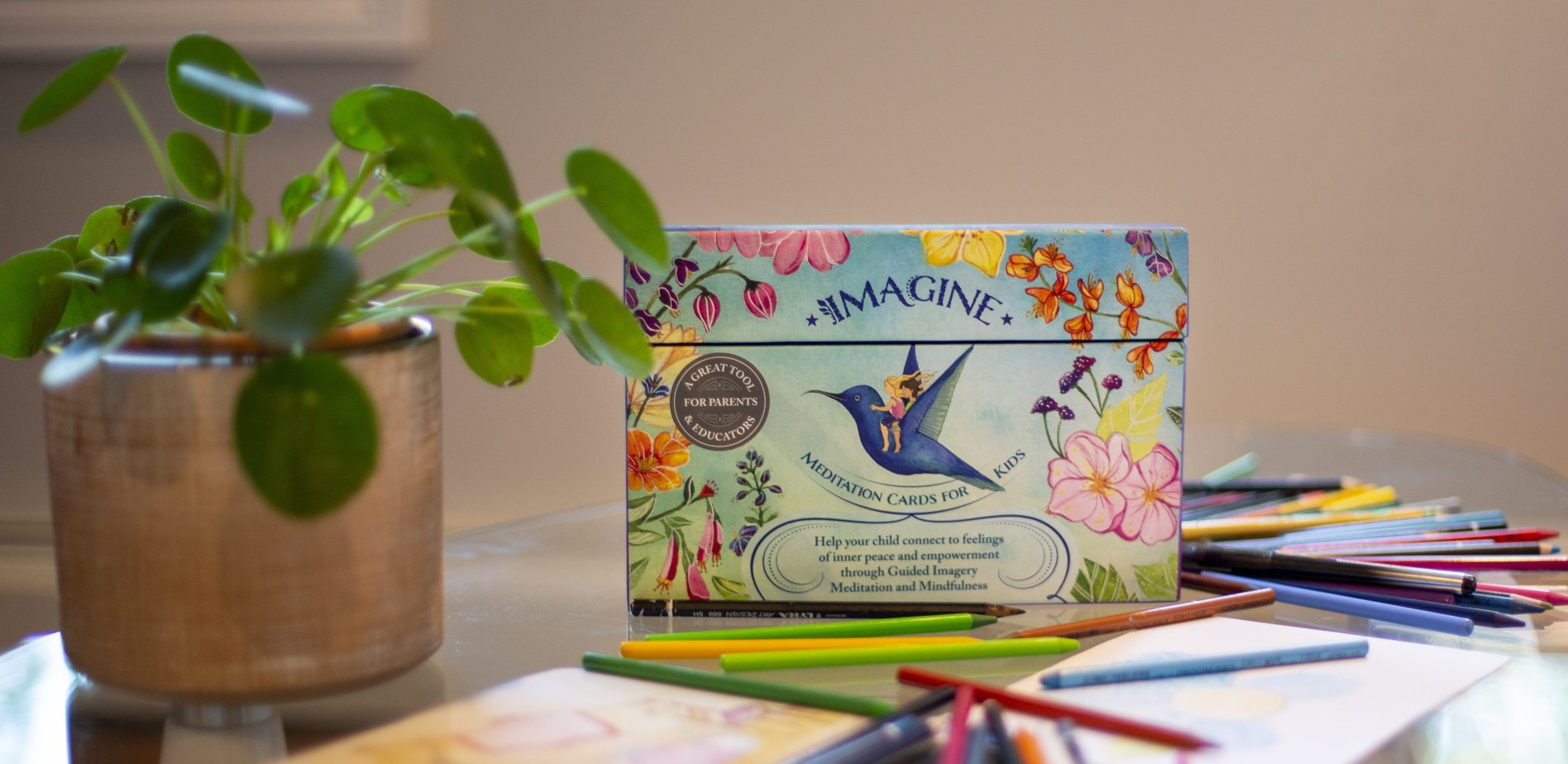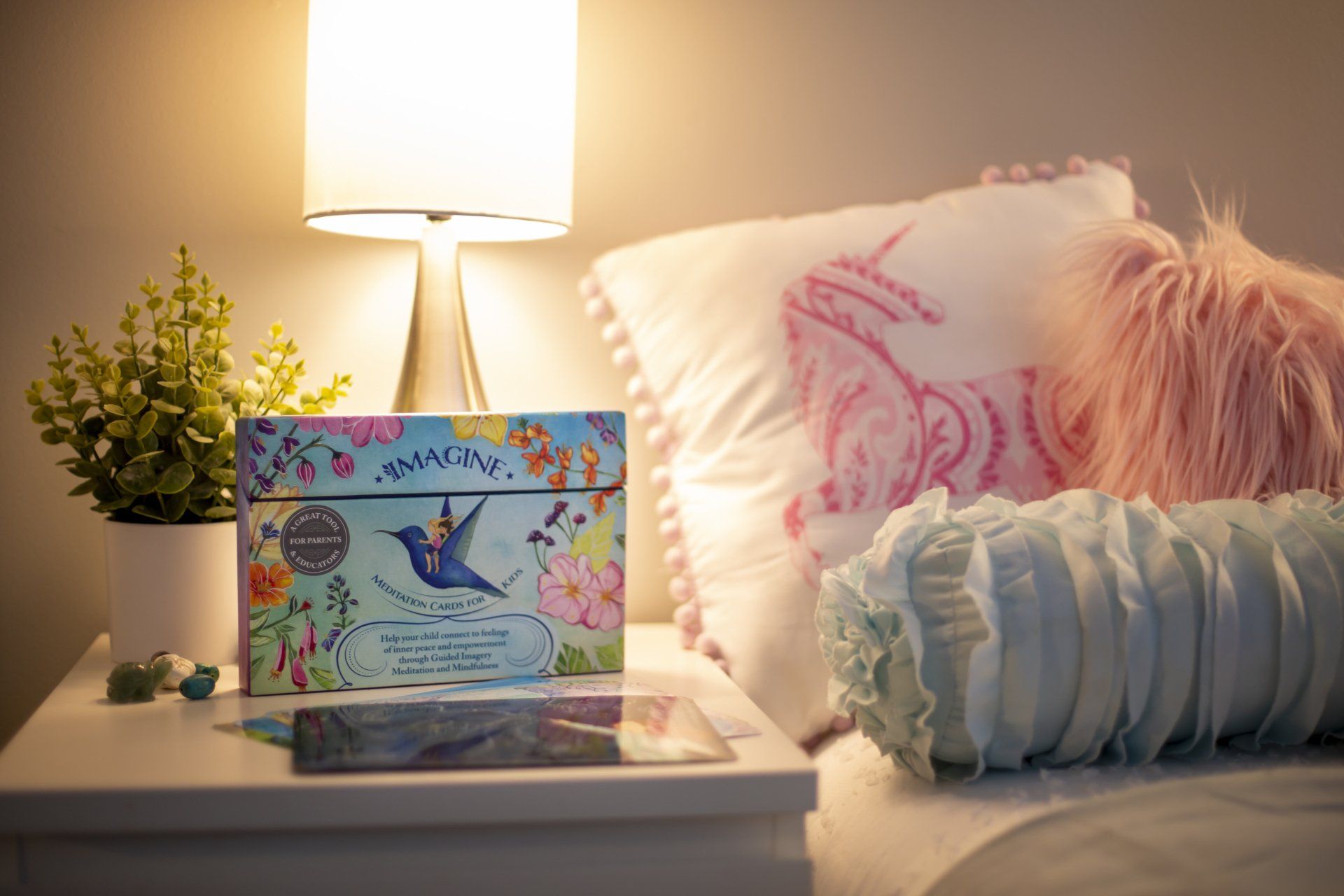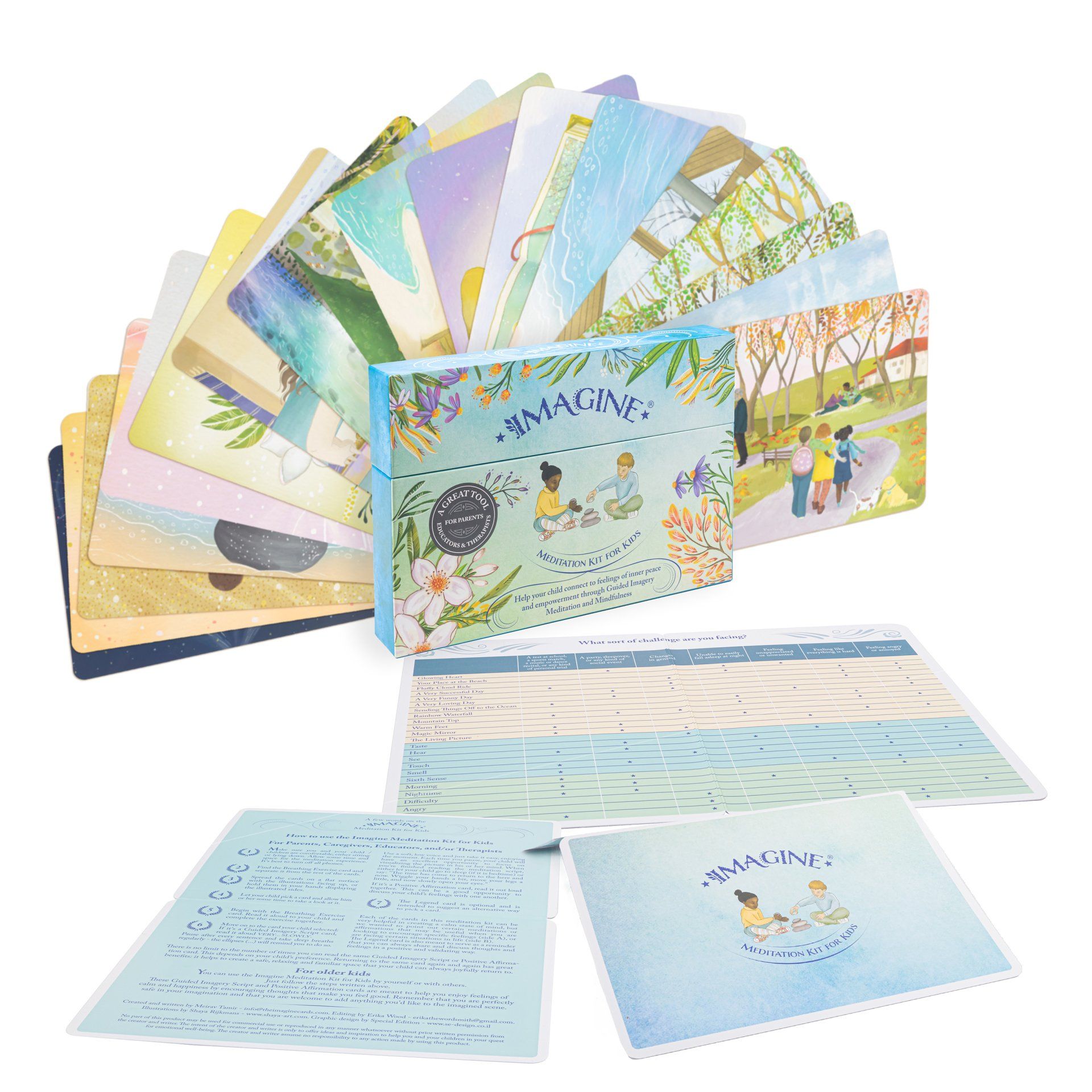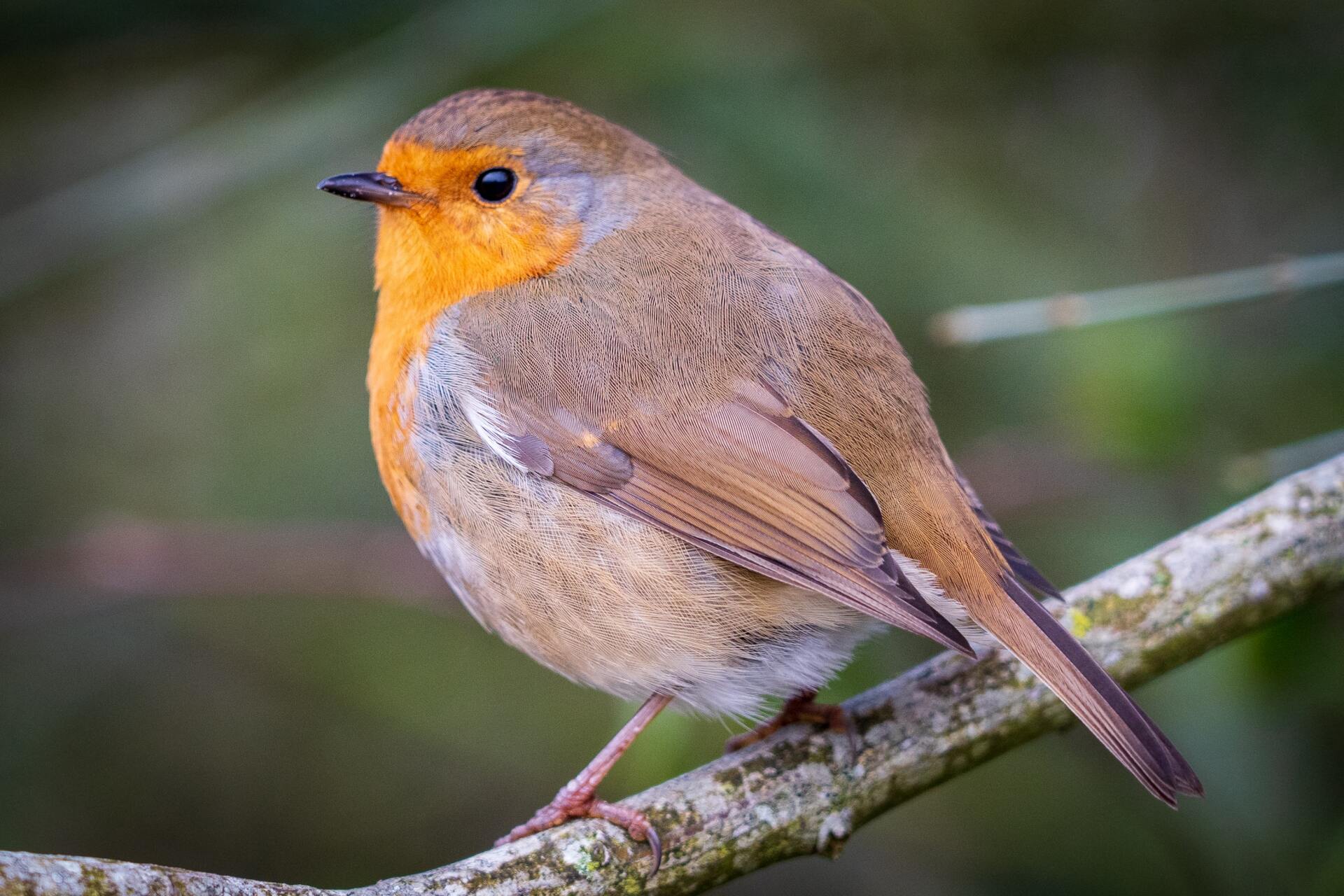The Imagine Blog

In my last blog I discussed the everyday challenge of going to sleep and how a simple bedtime routine can be a HUGE help. So now a little more into detail with these great ways to make it work! Phase One – Taking Care of the Body Try dedicating the first 10 minutes of the routine to basic actions that prepare the body for hopping into bed, such as brushing teeth, getting into pjs, and snagging a glass of water. Do your best to make sure these happen at about the same time and, if possible, in the same order. And don’t forget to include a cut-off time for electronics – at least 30 minutes before it’s time to fall asleep. Blue light has been shown to limit production of melatonin, a hormone that’s key to maintaining a healthy sleep cycle. Avoiding electronics right before bedtime will help kids fall asleep faster and wake up feeling rested. Once all of this is out of the way, you can move on to the next phase of the routine. Phase Two – Taking Care of the Heart and Mind The second phase, in my opinion, is the best part of the routine, and it actually offers a priceless opportunity for you to create a 100% nurturing experience for your kids . In fact, the content you pour into the next 10 minutes or so will have a life-long effect on them. There are a ton of different things you can do to treasure your time together. You can… Read a book Take turns saying things you’re grateful for Talk about the good things that happened that day Sing a song or say a prayer Say goodnight to family members, friends, the moon, the stars, the birds, or even the trees outside The Guided Imagery Meditation Option If you haven’t before, you could also give guided imagery meditation a try! You might be surprised how fun and calming it is to visualize a pleasant scene as if you’re part of it. There are many different types of meditation you can do depending on your preference: breathing practice, progressive relaxation, mindfulness meditation focused on the five senses, landscape visualization, self-esteem exercises… And the list goes on! Get started with one of my guided imagery meditation scripts: The Protection Bubble . Then you can branch out based on your success. (Many of my customers swear by bedtime meditation!) Keep it short so bedtime remains as consistent as possible, but don’t be in a hurry. Above all, make sure to be present. These are some of life’s most precious moments, so just relax into the bonding experience. The more you give, the more you’ll receive during these positive, soothing 10 minutes. Oh, and try not to blink… They’ll be all grown-up so fast! :)

“My kids always go to sleep so nice and easy!” said no parent ever. Getting your kids to go to sleep every night can be quite difficult, wouldn’t you agree? When my kids were young, I used to feel like I could fall asleep a hundred times before they ever did. And by the time the house was quiet, I was running on fumes. The Challenge – Encouraging the Kids to Sleep Unfortunately, falling asleep is not something that children can do on command, and it can get frustrating for all parties involved when they struggle with bedtime. The good news is that following a regular bedtime routine can turn that difficulty into willingness and even, dare I say, anticipation. Not only does a solid routine help to bring each day to a close in a positive way, but it also contributes to better sleep at night. This will have a great impact on your children’s health and well-being, not to mention your own... Still skeptical that it’s even possible? Perhaps that’s because you’ve never given guided meditation a try. ;) But before we get into that, let’s talk a little bit about the basics of bedtime. The Road to Success – Creating a 20-minute Bedtime Routine All good bedtime routines are built on a few similar and repetitive activities that occur every night at around the same time. But making the routine predictable does not mean it has to be dull (even though that can help with the process of winding down). The magic lies in creating a familiar and foreseeable space that kids associate with going to sleep. This provides young, active kids with a sense of security that gradually allows them to let go of the day and welcome a good night. Best of all, a bedtime routine doesn’t need to be long! About 20 minutes will do for a soft landing :) In my next blog - an easy two-phase process for a successful and fun bedtime routine.

“ I am smart and capable. I am kind. I am confident. ” Could something so simple actually work? Absolutely, yes! And when it comes to managing thoughts and feelings, it doesn’t get much easier than positive affirmations. What Are Positive Affirmations Positive affirmations are simple, short sentences with motivating or reassuring content that you can repeat to yourself in order to improve your mood or mindset. An easy yet powerful stress management tool, positive affirmations can be applied to any aspect of life to increase your confidence and help you feel good. When used often enough, they can have a real and lasting effect on the way you naturally think and behave. Tips to Maximize Your Affirmations Say the words “I am” in your positive affirmations. Doing so helps to create a more favorable state of mind – one in which you feel connected to the emotions you want to promote. Focus on the present. Sticking to present-tense statements makes them feel more real and attainable. There’s no need to worry about whether the affirmation will come true because you’re telling yourself it already is. Be specific about your wording. Statements that affirm the feelings you want, such as “I am courageous,” are more impactful than statements that negate your current feelings, like “I am not scared.” Using Positive Affirmations With Kids The wonderful thing about positive affirmations is that there is no limit to their usefulness – especially when it comes to kids. Kids encounter so many different situations each day that test their skills and emotions. Here are just a few examples of times when you can try positive affirmations with your child: First thing in the morning, to start each day with a positive mindset At bedtime, to ease their transition to a restful sleep When facing a test at school or any other kind of personal challenge When feeling an overwhelming emotion, such as stress, anger, or sadness What Positive Affirmations Are Not Positive affirmations are a great tool to train the mind toward positive thinking and emotional regulation. But it is worth noting that all emotions are valid and serve a purpose. Kids should know that it is absolutely OK to feel whatever emotion they are feeling. It’s OK to be sad, angry or stressed, and it is OK to feel overwhelmed. Positive affirmations are not a tool to erase negative feelings altogether, since there are times when those emotions are healthy and necessary. This message can be especially helpful to kids, who tend to see things in black and white. That said, positive affirmations are great any time a person decides they’d like to transition to a new mindset. So next time you or your child feel the need to turn things around, give these tips a try. Sometimes, all it takes is a simple “I am OK right now.”

What's included in the new Imagine Meditation Kit for Kids 1 | Guided Imagery Meditation Cards The kit features 18 guided imagery meditations with all-new texts and illustrations, crafted in the same well-loved format as the original Imagine Meditation Cards for Kids. Each offers a story-like scene that kids can occupy and participate in. 6 of these meditations focus specifically on the senses, helping kids to connect mindfully to their own senses. 2 | Positive Affirmation Cards The kit also contains 6 positive affirmation cards, which can be very powerful and helpful when used on a regular basis. These affirmations are great for situations that arise frequently in everyday life. There’s a card for morning, for nightime, for getting ready to face a test or difficulty, and for dealing with tricky feelings like sadness, stress, or anger. In my experience, just a few good affirmations can go a long way in helping children to regulate their feelings and build a positive emotional foundation. The affirmation cards offer a quick and effective mindfulness moment whenever it’s needed. 3 | Legend Card One entirely new feature of the kit is the legend card, which offers help in picking just the right meditation or affirmation. The legend card works by guiding you to the perfect card through questions: “How would you like to feel?” and “What sort of challenge are you facing?” Then, it suggests a card to promote that feeling (relaxation, self-confidence, or focus, for example) or to help prepare for certain challenges (such as a test at school, a sports match, or even just going to sleep at night). 4 | The Breathing Exercise The breathing exercise is a fundamental part of any relaxation method, the importance of which cannot be overstated. I’ve found that sticking to a deep breathing technique and allowing it to become second nature often has great benefits that – it goes without saying – can truly last a lifetime. Comparing the Card Sets SO, what’s the difference between the new kit and the earlier meditation cards? One major difference between the new and previous card sets is their selection of guided imagery scripts and illustrations. The Imagine Meditation Cards set includes DIY cards, so that kids can create their own meditations. Meanwhile, the new Imagine Meditation Kit features positive affirmation cards and a legend card that helps you choose just the right meditation for any occasion. But no matter which set you try, each card has been written to inspire kids to visualize a scene that they, themselves, take part in. This helps them to connect to their own inner worlds and experience a wide range of good feelings such as calm, joy, self-esteem, positivity, and capability. As complementary products, both sets are great mindfulness tools in their own right. You don’t need to get the first set in order to enjoy the second set. But if you enjoy one, you’ll love them both!

The last few days have been so exciting with the launch of our new Imagine Meditation Kit for Kids. Upon reflection, the pandemic has forced so many changes on everyone’s day-to-day life. In my case, it’s had a drastic effect on in-person sessions and children’s meditation groups, which got put on pause for quite a while. In fact, everything seemed to be put on pause. But then I realized, with all these “at home” days, it would be a great opportunity to kick off Imagine Meditation’s next big project! Behind the Scenes: Creating the Kit My first step was to start drafting all the new meditation scripts. As inspiration, I began thinking of the positive feelings I hoped to promote in these texts, as well as ways of making them feel vivid and real through guided imagery. This process was such a delight! I found that the more I focused on peaceful and enlightening imagery, the more fluent I became in writing and dreaming up new ideas. A Spotlight on the Senses As the scripts came together one by one, I let my intuition guide me, no matter where it led. One notion in particular that fascinated me was emphasizing the five senses and inspiring kids to connect to their own senses. So, I chose to dedicate one full meditation to each of the five senses, taking the time to consider how best to capture the experience through the imagination. And, of course, I had to include just one more script to explore the sixth sense as well. : ) Focusing on Positivity Another notion I had was to play around with alternative realities in which all is going wonderfully well. With this in mind, I created cards such as “A Very Loving Day” in which everyone loves and cares for everyone else (kids, grown-ups, heads of state, business leaders, and even cats and dogs). Not wanting to stop there, I went on to write “A Very Funny Day,” a day full of playfulness and giddy laughter, and “A Very Successful Day,” one in which kids get to image succeeding at anything that they set their mind to, whether big or small. The Underlying Philosophy It’s not that I’ve been living on a deserted island over the past two years, unaware of what’s been going on in the world (although that’s seemed potentially therapeutic at times). And no doubt, it can be challenging to stave off all the negativity. But the philosophy I follow is this: when you broaden the possibility of goodness in your own imagination, it is a big first step in bringing goodness to life in the world around you. As Walt Disney once said, if you can dream it, you can do it. I offer this meditation kit for kids with great pride, and with confidence that it will bring more peace and joy into the world. *** Go here for more info on the new kit and comparing the two card sets.

Focusing your attention, even for a short while, on your senses is a time-honored mindfulness practice that will leave you feeling more relaxed and present. The idea is to try and clear your head of unnecessary thoughts and then concentrate on what you can sense without feeling any judgement toward it. Here are 3 tips that can help you do that successfully :) 1. Practice mindfulness to experience the world around you . One by one, try turning your attention to something you can see, something you can hear, something you can touch, smell, and taste. This simple yet powerful practice is great for teaching your mind to focus on one thing , and also allows you to experience the object of your attention without the need to define or classify anything about it. Better still, you’re not required to decide if you think it’s good, whether you like it, or anything else for that matter. All you have to do is accept the sensation as it is and be okay with that. Sounds like a healthy idea, right? 2. Set the stage for your senses. When you know you’re about to take your five senses for a spin as a way to unwind, choosing your surroundings and creating just the right atmosphere can do a lot to support your plan . Make sure to incorporate elements that entice each sense. Sight : Try sitting in a room you really like and focusing on a favorite decoration. Or pick a pleasant spot outside where you feel relaxed. Anywhere you choose is great as long as your eyes feel joyfully occupied. Smell : Use a diffuser with a nice essential oil such as lavender or jasmine. If you’re out in nature, search for a scent you can connect with, like the fragrance of freshly cut grass or a flowering bush. Hearing : Turn on some calm music or sit quietly and listen to the sound of birds, crickets, or the wind outside. Touch : Try centering your attention on the feel of a fluffy pillow or perhaps a smooth object like a stone or seashell. Taste : Engaging your taste buds can get a little tricky. After all, you don’t want to make yourself hungry instead of relaxed. ;) Still, see how you fare at focusing your awareness on the taste of a fruit or any other food that you like. Allow yourself to eat it slowly, giving it your full attention. 3. Have some fun with guided imagery! Guided imagery meditation encourages you to engage all of your senses in a relaxing mental scene. This simple trick can help you soothe your body and mind by supplying it with a vivid scenario to concentrate on. Don’t let the term “guided imagery” fool you: this visualization technique isn’t only about sight. Sure, you still want to be able to see the scene within your mind’s eye, but you also want to hear, smell, touch, and taste it as much as you can using your imagination. So, try visualizing yourself at a place where you’d gladly spend the whole day. For me, it would be sitting next to a beautiful swimming pool by the sea, watching an amazing sunset :) As you conjure up that special place, make sure to involve your senses as much as possible: Feel the temperature of the air, the gentle warmth of the sunlight on your skin. Sense the gentle breeze on your face and the smooth fabric of your clothes. Notice the sound of the sea waves or the gentle bubbling of that fountain by the pool. Add an enjoyable scent to the air. Maybe it’s the smell of the salty ocean or a fire pit nearby. And don’t forget: while you’re having all that fun, go ahead and imagine something tasty, too!

What is Guided Imagery? Guided Imagery is a therapeutic technique in which we wield our imagination as a source of positivity. It can be used by practitioners in many ways to help their clients achieve their personal goals, no matter how specific or broad these goals may be. Perhaps you’d like to add feelings of joy into your life, or maybe you just want to make it through a specific dentist appointment. When you visualize yourself achieving your goal, no matter how big or small, you take a very big first step toward reaching it. Guided Imagery is all about visualization, something that we do all the time. In fact, we’re born with the innate ability to visualize. The problem is that many times, if not most of the time, we tend to visualize how things could go wrong, rather than how they could go right. But if you don’t envision your desired success, it becomes that much harder to achieve it. The basic principle behind Guided Imagery is to utilize positive scenarios that help us feel good and capable in any area of our life. What is Guided Imagery meditation? Guided Imagery meditation offers us an uplifting experience as we imagine ourselves within an enjoyable and positive scene. To enhance the effect, we try to make the image as realistic as possible, actively engaging all of our senses, so that we not only see a picture, but also hear it, feel it, smell it and maybe even taste it. Why choose Guided Imagery when you want to start meditating? I have so many good things to say about Guided Imagery as a way to get going with meditation, and that’s simply because of how easy it is to start and how rewarding it is from the beginning. With Guided Imagery meditation, instead of setting aside our thoughts (as we would normally be required to do in order to meditate), we replace them – for a short while – with positive, soothing thoughts that are both relaxing and empowering for us. We create this nurturing space in which we simply have a good time and delight in the moment. Even one minute of existing in this mindset can have a major impact. When we focus our attention on a good feeling, it has an immediate positive effect on our perspective. It’s great when we can stay embedded in that good feeling for at least a few moments, but no need to stay there too long. How can kids benefit from Guided Imagery meditation? Realizing how enjoyable this type of meditation can be is what clued me into how effective it could be for kids. Using your imagination makes the act of meditating much more appealing when you’re just starting off, and that’s especially true for kids. It’s also been shown that little ones have an even greater ability to visualize their thoughts, meaning that their imaginary scene will be that much more vivid. It’s usually pretty easy to get children engaged in using their imaginations, and from there, it’s not long before they realize how fun meditation can be!

Many people think that they’re not cut out for all that meditation stuff. Many times I hear people say that they just can’t do it. And the thought that their kids might show an interest in meditating makes them laugh : ) But, what do they have in mind when they think about “meditating”? Maybe they tried it once, and they suffered from the beginning to the end… The thing is that “meditation” is one word used to describe many ways and techniques to help us relax and feel good. The key is to find which one of them works for you. And if you are willing to explore a little it can be so rewarding! My personal story with meditation started off in my 20s with a good spoonful of frustration. At the beginning of my journey, I felt encouraged by the positive aspects of meditating but just couldn’t seem to “turn off my thoughts,” which I had always thought was the key to success. What I didn’t realize at the time was that the information I’d been given actually originated with monks and other people who were highly devoted to a spiritual way of life. Today, I understand that the gap between the place I was in my life and these teachings was simply too big to bridge . But at the time, I considered any attempt to meditate a failure if I wasn’t able to resist the urge to scratch my nose. With time, and after learning more about spirituality and meditation, I realized that I was really not happy about the idea of high demands I couldn’t reach. And the further I explored the world of meditation and the more I studied Guided Imagery – which had a very strong impact on me – the more I came to realize how strongly I feel about making mediation an easy, desirable and fun experience. For myself and for anyone else, for that matter. For me, I found the answer for how to make meditation easy in Guided Imagery. It’s really a great way to start meditating and actually like it from day one. Guided Imagery meditations encourage us to focus our minds on calm and pleasant images, visualize ourselves as part of peaceful scenes and engage all our senses in the uplifting imaginary experience. We are not required to “stop thinking” or “ignore our thoughts”, but to allow ourselves to focus on very positive visualizations that have an immediate soothing effect. Using your imagination makes the act of meditating much more appealing when you’re just starting off. And that’s even more true for kids! It can be quite easy to get them engaged in visualizing, and from there, it’s not long before they realize how enjoyable meditation can be! *In the photo: a joyful mindfulness moment : )

Walking around our neighborhood with my dog, my eyes are filled with drowsy, wintery whites, grays and browns. But the sounds in the air tell a whole different story! It’s the beginning of March, and many bird species have returned from their winter escapes. They’re filling the bushes and trees with lively chirping and tweeting. Hearing their harmonious sounds fills my heart with joy and excitement: the birds are back, and spring is about to follow... Listening to the singing of birds is actually thought to have a healing effect. In a children’s hospital in Liverpool, England, the sweet sounds of birdsong carry through the hallways. The merry refrain is a recording of the dawn chorus from a nearby park, and is intended to calm anxious young patients. I believe that this same healing effect may be derived from any of the delicate sounds we find in nature , such as the gentle flow of water, a light wind rustling the leaves of a tree, a campfire at night or the calm sea waves rolling up to shore and back. Focusing on the senses is key to many of the mindfulness practices that support our well-being. One great exercise to try (for both adults and kids!) is mindful listening – also called auditory mindfulness. Turning your attention to the audible world around you, as easy as it may sound, is actually a powerful tool to increase feelings of calm and relaxation . Just take a few moments and pay attention to the sounds you can hear, without any judgement towards them. To further enhance the soothing effects of auditory mindfulness, try to focus on any ambient sound that you can . You will realize an immediate positive effect on how you feel. Now obviously, if they’re jackhammering the sidewalk outside, that won’t be the best way to start… Still, it shouldn’t be too difficult to find the right opportunities for this exercise. Start by listening closely next time you take a walk in the park, or you could just open up a window and try to turn your attention to the sounds of the open air. Definitely try this when you are out in nature. That said, with a little forethought, you can also create just the right backdrop for mindfulness at home – whether it be by playing a soundscape on YouTube or turning on some music or sounds you enjoy listening to (think bells or maybe a wind chime). Allow yourself a few moments to connect to the sounds filling your ears. This will help foster a sense of peaceful positivity you can carry with you throughout the day. Another way to inspire positive vibes is by practicing guided imagery meditation. Guided imagery engages the senses in an imaginary picture in order to create a more vivid experience for the body and mind. Try to imagine a peaceful valley with a gentle stream, songbirds in the trees and soft green grass. Once you’ve got the visuals down, add the sound effects into your scene: little splashes of water, birds tweeting, a gentle wind in the grass. Notice how they elevate the experience. Your body will follow your thoughts even if they are not real. When you imagine being in this pleasant setting, not only will you enjoy it in your mind, but your whole body will join in on the calming effect. Each and every day is brimming with sounds. They’re an ongoing part of our lives, so why not take a moment to focus your attention on the sounds that make you feel good? It will be like music to your ears! If you’d like to read some more, here’s a nice article on How Listening to Birdsong Can Transform Our Mental Health . And here’s another great, quick read (with a wonderful soundtrack): Around the World, the Soothing Sounds of Birdsong Are Used as Therapy . Photo by Nick Fewings on Unsplash

Working on the next version of our meditation cards for kids (very exciting!!), one of the basic themes I wanted to bring forth in this kit was self-love. The definition of self-love is actually pretty simple : a. An appreciation of one's own worth or virtue b. Proper regard for and attention to one's own happiness or well-being And its application couldn’t be more necessary (just read Why Is Self Love Important? ). Self-love is the key to a positive self-image. It gives us confidence and the belief that we can love and be loved. When we love ourselves just the way we are, we become greater versions of ourselves . Moreover, when we approve of ourselves fully, we feel motivated to take good care of our bodies and minds and to make healthier choices that are not made out of guilt, a need to please or a desire to avoid conflict. Self-love makes us more powerful , as we are more committed to our personal happiness and well-being. With self-love we get better at allowing ourselves to make mistakes or to fail and learn from the experience. And above all, practicing self-love is a great way to lower stress levels, helping us to feel more confident in our abilities and inner stamina regardless of how others perceive us. “After years of individual counseling with clients and conducting hundreds of workshops and intensive training programs across the country and around the world, I found that there is only one thing that heals every problem, and that is: to know how to love yourself.” Louise Hay Showing love towards oneself should be one of the basic teachings we offer ourselves as the intellectual and emotional beings that we are, and just as important, it is our responsibility to pass it on to our kids. We know that this was never necessarily on the curriculum at school. More often than not, we were brought up to believe that validation and individual worth come from outside sources, such as school grades, athletic achievements or desired social circles. Self-love is about finding happiness within ourselves just as we are in the present moment, and not relying on any external recognition. Practicing self-love will not only benefit us on an individual level, but will also make it easier for us to love and accept others. When we truly accept who we are, with all our flaws and quirks, it also gives us the freedom to accept others with all of their flaws and quirks as well. Oh, and just to get this out of the way – there’s nothing selfish about self-love. Remember that you can’t pour from an empty glass. So, here are a few tips for you and your kids on how to practice self-love: When you see your reflection in the mirror, smile! And say “I love you” to your reflection. (Hey, why not?) When you go to sleep at night, tell yourself what a wonderful person you are, how proud you are of yourself and how you like being in your own company (you’re going to love doing this). When making choices, always consider what will increase your happiness and sense of well-being. You are worthy and capable of good things. When you’ve made a mistake, acknowledge that you are human and will therefore make mistakes sometimes – and that’s OK. Tell yourself a few times a day “I love myself completely.” You wouldn’t believe the impact this has. Have a very happy Valentine's Day!
